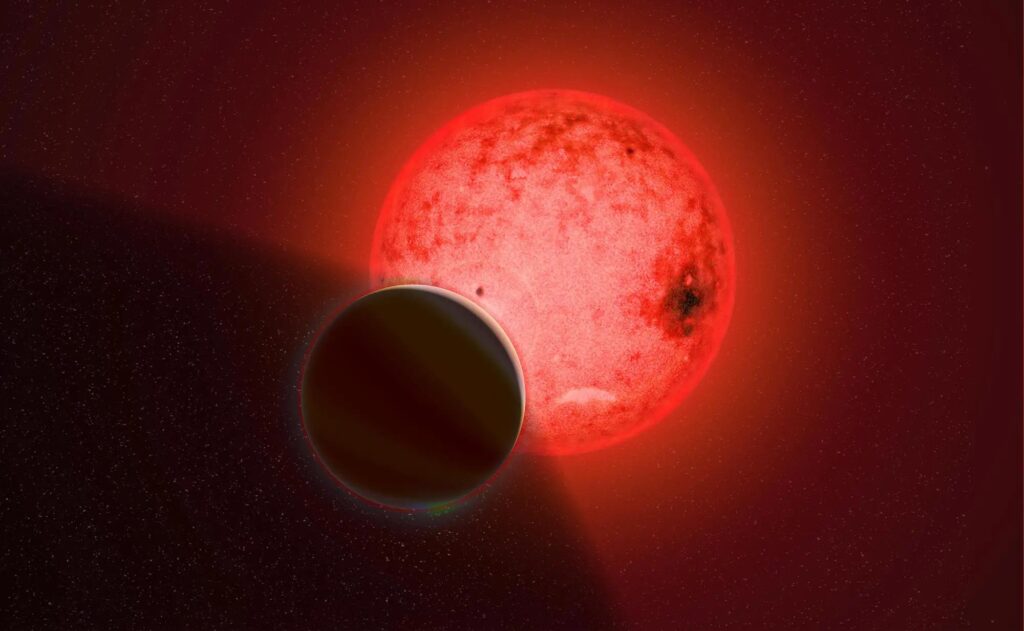The TESS satellite has discovered the gas giant TOI-3235 b, which is the size of Jupiter and orbits its star in less than three Earth days. Such massive planets in orbits around red dwarfs still amaze scientists.

An international group of scientists working with data from the NASA Transiting Exoplanet Survey Satellite (TESS) announced on February 20 the discovery of a new planet, designated TOI-3235 b. It is a gas giant the size of Jupiter orbiting a red dwarf.
The discovery of an exoplanet using the TESS satellite is not something special. Over the past few years, it has found about 6,100 exoplanet candidates. Of these, more than 3,000 have already been confirmed. But all the same, objects outside our Solar System continue to raise more and more questions.
TOI-3235 b is a transit planet. That is, it passes between its star and the Earth. As a result, we see a decrease in the brightness of the luminary. Therefore, we can accurately determine not only the orbital period, which is only 2.59 days, but also the mass and radius of the gas giant.
How did such a large planet form
TOI-3235 b has 66 percent of Jupiter’s mass, but it is 2 percent larger in radius. This gives a planet density of 0.78 g/cm3. That is, it could float in a colossal ocean of water, just as Saturn did in the Solar System.
But what surprises scientists most is not the low density, but the high mass of such a small star. TOI-3235 b is not the first gas giant found near a red dwarf and all these cases still remain a mystery to scientists.
It is believed that the mass of the gas-dust disk is proportional to the mass of the host star, and the intensity of the formation of planets in it is uniform. In order for a body like TOI-3235 b to be formed, either the mass of the source material itself must have been excessive for a red dwarf, or the clumping of particles must for some reason go abnormally intense.
Scientists expect that some of these questions will be answered in the future. After all, the fact that the planet is in transit makes it a good candidate for exploring the atmosphere with the James Webb Space Telescope.
According to phys.org
Follow us on Twitter to get the most interesting space news in time
https://twitter.com/ust_magazine
